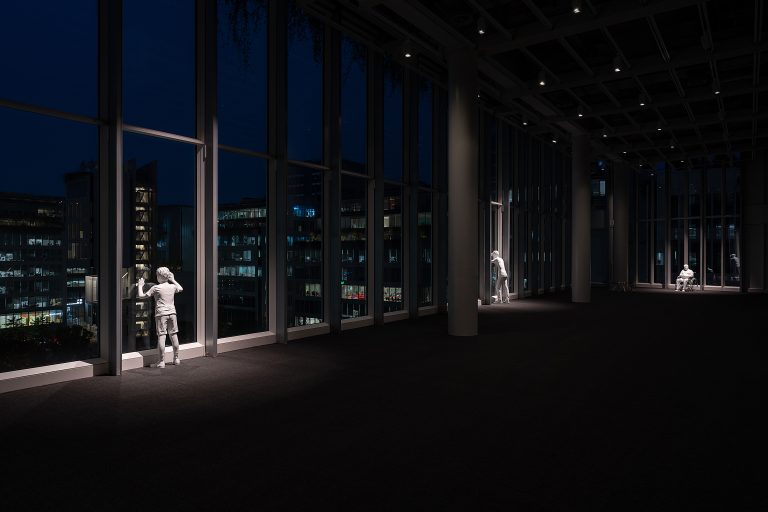_The-TouchDetail-edited-1.jpg)
The Touch, 2011
hube: The verbal and the visual are two of the many languages used in art. Some might argue that spoken language is a limiting medium for communication; inaccuracies in translation, definitions, and terminology can obfuscate meaning and impede dialogue between the artist and the viewer. Others prefer visual language, arguing that it has more dimensions. How do you perceive the conflict between the verbal and the visual in your work?
ELMGREEN & DRAGSET: There doesn’t necessarily need to be a conflict. For us, it’s more about using the two separately. Our practice is based on dialogue, so without the verbal, we wouldn’t get through the idea phase. We also need verbal communication in the making phase of the work, since we often collaborate with craftspeople and other specialists to realise our ideas. When it finally comes to the presentation phase, we agree that verbal communication should be turned down, or even off. The viewer should be given time and space to develop their own relationship with the artwork. But following this, the verbal might come in handy again, since many audience members like to learn more about artists’ backgrounds, their thinking, the context of their work, and so on, in order to gain a deeper understanding of the artwork(s) they have encountered. Many artists hate to talk about their work, but for us, verbal communication is such a natural part of the process that a verbal follow-up comes quite easily. In general, we believe that information should be equally accessible to all members of the audience.
h: The human body has remained a site of artistic interest throughout history. It has also played an important role in your work. One of your recent figurative pieces, What’s Left? (2021) was exhibited as part of Useless Bodies? at the Fondazione Prada in 2022. A statement about this hyperreal sculpture of a young man, who dangles from a wire with a balancing pole in his hand, says it can be interpreted as “a representation of a body struggling to find its role as a political actor or instrument of social change.” How do you think the concept of physicality might change in the next 100 years?
E&D: A hundred years is a long time. It is absolutely impossible to look that far into the future. What we do know is that biotech and infotech will merge to a much higher degree than we have seen so far. How long this process takes depends on a number of factors. Much of the technology is already there, but ethics and regulations, for example, can slow the process down. There’s even commercial interest in stalling in order to mine the financial potential of what already exists. But with the recent COVID-19 pandemic, we have seen that things can change suddenly.

